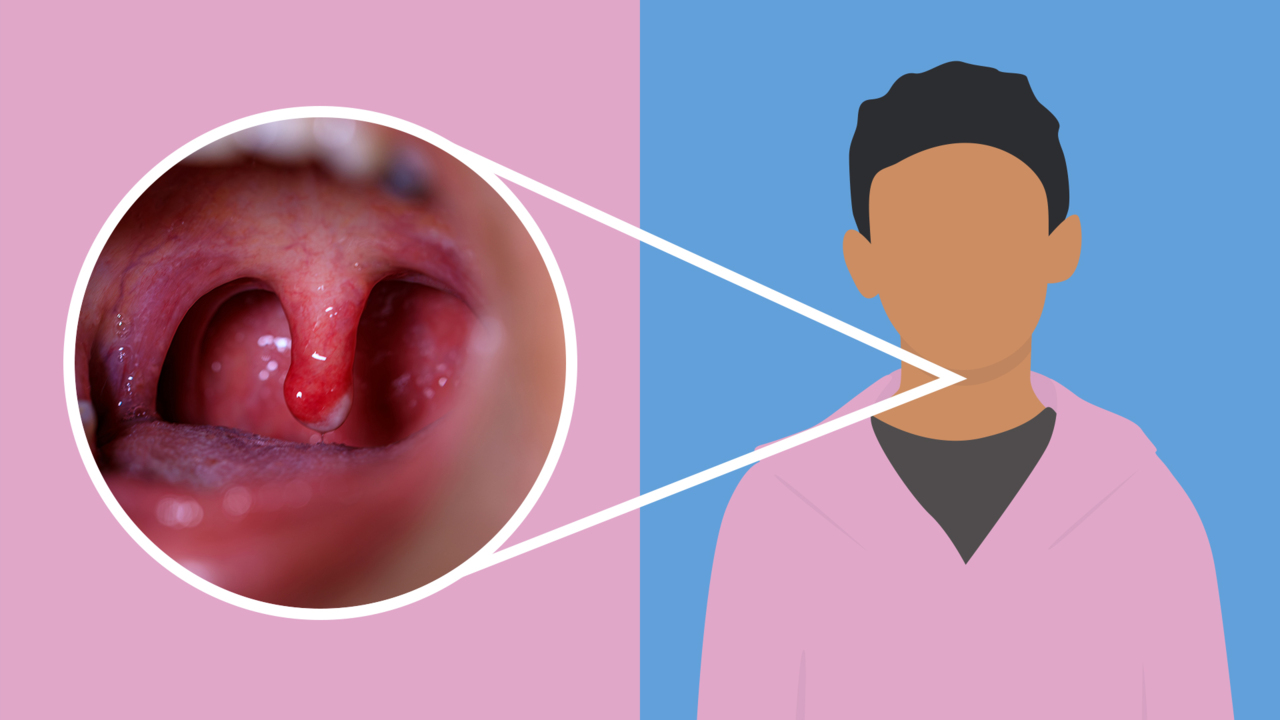A sore throat can be an uncomfortable and sometimes alarming symptom, especially when it occurs without an accompanying fever. While many people associate sore throats with infections like the flu or strep throat, which typically come with a fever, there are several reasons you might experience a bad sore throat without a fever. This article will delve into the causes, symptoms, and treatment options for a bad sore throat with no fever, helping you better understand what might be causing your discomfort and how to manage it effectively.
What is a Sore Throat?
A sore throat, medically known as pharyngitis, refers to pain, irritation, or scratchiness of the throat that often worsens when swallowing. It is one of the most common reasons for doctor visits. While a sore throat can be a symptom of various conditions, it is not always associated with a fever, which can make the underlying cause less obvious.
Common Causes of a Bad Sore Throat with No Fever
1. Viral Infections
Viral infections are a leading cause of sore throats, and not all viral infections cause a fever. For instance, a cold or mild viral infection might result in a sore throat without the high temperatures associated with more severe illnesses. Viruses like the rhinovirus, adenovirus, and coronavirus (non-COVID strains) are common culprits.
2. Allergies
Allergies to pollen, dust, mold, or pet dander can lead to a sore throat without a fever. When allergens enter the body, the immune system responds by releasing histamines, which can cause throat irritation and postnasal drip, leading to a sore throat.
3. Dry Air
Dry air, especially in winter or in environments with artificial heating, can dry out the throat and cause discomfort. This is a common reason for waking up with a sore throat that often subsides as the day progresses. A sore throat caused by dry air typically does not accompany a fever.
4. Acid Reflux (GERD)
Gastroesophageal reflux disease (GERD) can cause a sore throat due to stomach acid irritating the lining of the throat. This type of sore throat is often worse in the morning and may not be accompanied by other typical symptoms like heartburn or fever.
5. Irritants and Pollutants
Exposure to irritants such as tobacco smoke, chemicals, and air pollution can lead to throat irritation without a fever. The throat’s sensitive tissues can become inflamed and sore when exposed to these harmful substances. Also read here: University Family Medicine Pueblo Colorado: Comprehensive Care for the Community
6. Muscle Strain
Vocal strain from excessive talking, shouting, or singing can cause a sore throat without any signs of infection or fever. This type of sore throat is usually temporary and improves with rest.
7. Mouth Breathing
Breathing through the mouth, especially during sleep, can lead to a dry and sore throat in the absence of fever. This can happen due to nasal congestion, sleep apnea, or simply as a habit.
8. Tonsillitis
Tonsillitis, or inflammation of the tonsils, can cause a severe sore throat, which may or may not be accompanied by a fever. In some cases, the tonsils can become inflamed without an infection, leading to discomfort without fever.
Symptoms Associated with a Bad Sore Throat with No Fever
1. Pain and Irritation
The most common symptom is a persistent pain or irritation in the throat. This can range from a mild scratchiness to severe pain, especially when swallowing or talking.
2. Redness and Swelling
The throat may appear red and swollen, particularly around the tonsils. In cases of tonsillitis or viral infections, white patches or pus may also be present.
3. Difficulty Swallowing
A bad sore throat can make swallowing difficult and painful. This is often due to swelling in the throat tissues, which narrows the passage and increases discomfort.
4. Hoarseness or Voice Changes
Straining the vocal cords or throat irritation can lead to hoarseness or changes in the voice. This symptom is particularly common in cases where the sore throat is caused by vocal strain or acid reflux.
5. Coughing
A dry or productive cough may accompany a sore throat, especially if postnasal drip is present. The coughing can further irritate the throat, exacerbating the pain.
6. Swollen Lymph Nodes
Although not as common without a fever, some people may experience swollen lymph nodes in the neck or jaw area when they have a sore throat.
When to Seek Medical Attention
While many cases of a bad sore throat with no fever can be managed at home, there are times when medical attention is necessary:
1. Persistent Symptoms
If your sore throat persists for more than a week without improvement, it’s important to see a doctor to rule out more serious conditions.
2. Difficulty Breathing or Swallowing
If you experience significant difficulty breathing or swallowing, seek medical help immediately. This could indicate a more severe underlying condition.
3. Severe Pain
If the pain is severe and not relieved by over-the-counter medications, it’s a good idea to consult a healthcare provider.
4. Blood in Saliva or Phlegm
Seeing blood in your saliva or phlegm is a cause for concern and should be evaluated by a healthcare professional.
Treatment Options for a Bad Sore Throat with No Fever
1. Home Remedies
Home remedies are often effective for managing a sore throat without a fever:
- Gargling with Salt Water: A saltwater gargle can help reduce inflammation and soothe the throat.
- Honey and Warm Liquids: Honey has natural antibacterial properties and can coat the throat, providing relief. Warm liquids like tea or broth can also be soothing.
- Humidifiers: Using a humidifier can add moisture to the air, helping to alleviate a sore throat caused by dryness.
- Rest: Resting the voice and avoiding strain can allow the throat to heal more quickly.
2. Over-the-Counter Medications
Several over-the-counter (OTC) medications can help relieve the symptoms of a sore throat:
- Pain Relievers: Acetaminophen or ibuprofen can reduce pain and inflammation.
- Throat Lozenges: These can provide temporary relief by numbing the throat.
- Decongestants: If postnasal drip is contributing to the sore throat, a decongestant may help.
3. Hydration
Staying well-hydrated is crucial when dealing with a sore throat. Drinking plenty of fluids helps keep the throat moist and can reduce irritation.
4. Avoiding Irritants
Avoiding smoking, secondhand smoke, and other environmental irritants can prevent further throat irritation.
Prevention Tips for a Sore Throat with No Fever
1. Proper Hygiene
Maintaining good hygiene, such as regular handwashing and avoiding close contact with sick individuals, can reduce the risk of infections that cause sore throats.
2. Manage Allergies
If you have allergies, managing them with antihistamines or allergy shots can help prevent sore throats triggered by allergic reactions.
3. Humidify Your Environment
Using a humidifier, especially during dry seasons, can help prevent sore throats caused by dry air.
4. Stay Hydrated
Drinking plenty of water and other fluids keeps the throat moist and less susceptible to irritation.
5. Avoid Straining Your Voice
If your sore throat is caused by vocal strain, try to avoid excessive talking or shouting, and give your voice time to rest.
Conclusion
A bad sore throat with no fever can be caused by a variety of factors, ranging from viral infections to environmental irritants. While most cases are not serious and can be managed with home remedies and over-the-counter treatments, it’s important to monitor your symptoms and seek medical attention if they persist or worsen. By understanding the possible causes and symptoms, you can take steps to alleviate the discomfort and prevent future occurrences. Remember, maintaining good hygiene, staying hydrated, and avoiding irritants are key to keeping your throat healthy and pain-free.














One thought on “Bad Sore Throat No Fever: Causes, Symptoms, and Treatments”